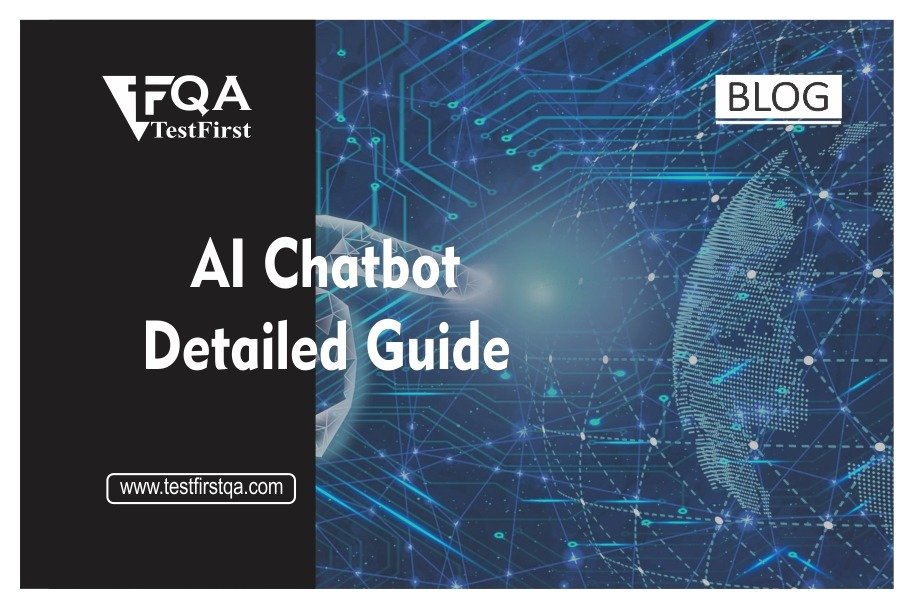
- May 6, 2023
- ksolutions
- 0
AI chatbot testing involves a range of techniques, including functional testing, usability testing, performance testing, and security testing. Each type of test focuses on a different aspect of the system and helps to ensure that it meets its intended purpose. Without proper testing, AI-based chatbots may fail to deliver satisfactory results or even cause harm to users.
AI Chatbot Testing Process Overview
Investing in thorough and comprehensive chatbot testing is crucial for businesses that rely on these systems for customer interactions. When it comes to testing AI chatbots, there are two main types of testing methods that can be used: manual and automated. Manual testing involves a human tester interacting with the chatbot in order to assess its functionality and performance. This type of testing is useful for evaluating the chatbot’s ability to respond appropriately to user queries, as well as identifying any errors or bugs. Automated testing, on the other hand, uses software tools and scripts to test the chatbot’s functionality.
This type of testing can be faster and more efficient than manual testing, especially when it comes to performing repetitive tasks or generating large amounts of data. Automated testing can also help identify issues with the chatbot’s behaviour under different conditions or scenarios. Ultimately, a combination of manual and automated testing is often necessary in order to thoroughly evaluate an AI chatbot’s performance before deployment.
Market Analyst’s Views on Ai Chatbots
According to the latest market analysts, AI chatbots have become an increasingly popular tool in customer service. One of the main benefits is that they are available 24/7, providing customers with immediate assistance and support. This not only enhances customer satisfaction but also helps businesses save on operational costs by reducing the need for human agents. Another advantage of using AI chatbots in customer service is their ability to handle multiple customers simultaneously without any delays or errors. Instead, they are expected to enhance and complement human work. AI chatbots are designed to handle repetitive and mundane tasks such as customer support inquiries, leaving humans free to focus on more complex tasks that require critical thinking and problem-solving skills. This means that businesses can increase productivity and efficiency while also reducing costs.
Some Of The Leading Ai Chatbot Testing Tools
The AI chatbot testing process is a crucial step in ensuring that the chatbot is functioning as expected and meeting the user’s needs. The process involves testing different aspects of the chatbot, including its functionality, performance, and user experience. During the testing process, developers use various tools to identify and fix any issues with the chatbot’s functionality. This includes tools for testing natural language processing (NLP) and machine learning algorithms used in the chatbot’s development. In addition to functional testing, developers also perform non-functional tests to ensure that the chatbot can handle high traffic volume and provide a seamless experience for users. Overall, an effective AI chatbot testing process ensures that the final product meets or exceeds user expectations while minimizing risks associated with poor performance or functionality.
How Can Testingxperts (Tx) Help?
TestingXperts (Tx) provides comprehensive AI chatbot testing services using industry-leading tools such as Botium, Testim.io,Applitools, Receptiviti and Dialogflow CX Tester. There are several leading AI chatbot testing tools available in the market that can help streamline the testing process and ensure that the chatbot is functioning as intended. Botium is an open-source chatbot testing framework that supports a wide range of platforms and languages. Testim offers AI-powered visual testing for chatbots, while Applitools provides visual AI testing for web and mobile applications. Receptivity uses natural language processing to test the conversational capabilities of a chatbot.
TX offers a range of advantages when it comes to AI Chatbot testing, including:- Expertise
- Comprehensive Testing
- Test Automation
- Cost-effective
- Flexibility
- Reliable Results
What Functionalities Should Be Tested In An Ai Chatbot?
When testing an AI chatbot, it is important to ensure that all functionalities are working properly. The following subtopics should be considered when testing an AI chatbot’s functionalities:
- Natural Language Processing (NLP): The chatbot’s ability to understand and interpret human language.
- Intent Recognition: The chatbot’s ability to recognize the user’s intentions and respond accordingly.
- Dialogue Management: The chatbot’s ability to manage the flow of conversation and maintain context throughout the interaction.
- Personalization: The chatbot’s ability to personalize responses based on user data such as preferences, history, or demographics.
- Integration with Other Systems: The chatbot’s ability to integrate with other systems such as databases, CRM systems, or third-party APIs.
Testing an AI chatbot can present several challenges including:
- Lack of training data for NLP models
- Difficulty in simulating natural conversations
- Ensuring consistent behavior across multiple platforms and devices
- Maintaining context throughout a conversation
Common Challenges Of AI Chatbot Testing
One of the common challenges in testing intent recognition and response accuracy is ensuring that the chatbot has access to sufficient data for training purposes. Without adequate data, it may not be possible for the chatbot to accurately recognize and respond to user intents.
Another challenge is dealing with variations in language and dialects, which can impact how users express their intents.
Other common challenges include dealing with complex queries or requests that may require multiple steps or actions, ensuring that the chatbot is able to handle multiple users simultaneously without errors or confusion, and ensuring that it maintains a consistent tone and personality throughout interactions with users. When it comes to testing an AI chatbot, the user experience and interface testing are crucial components.
About the Author
Written by TestFirst QA

